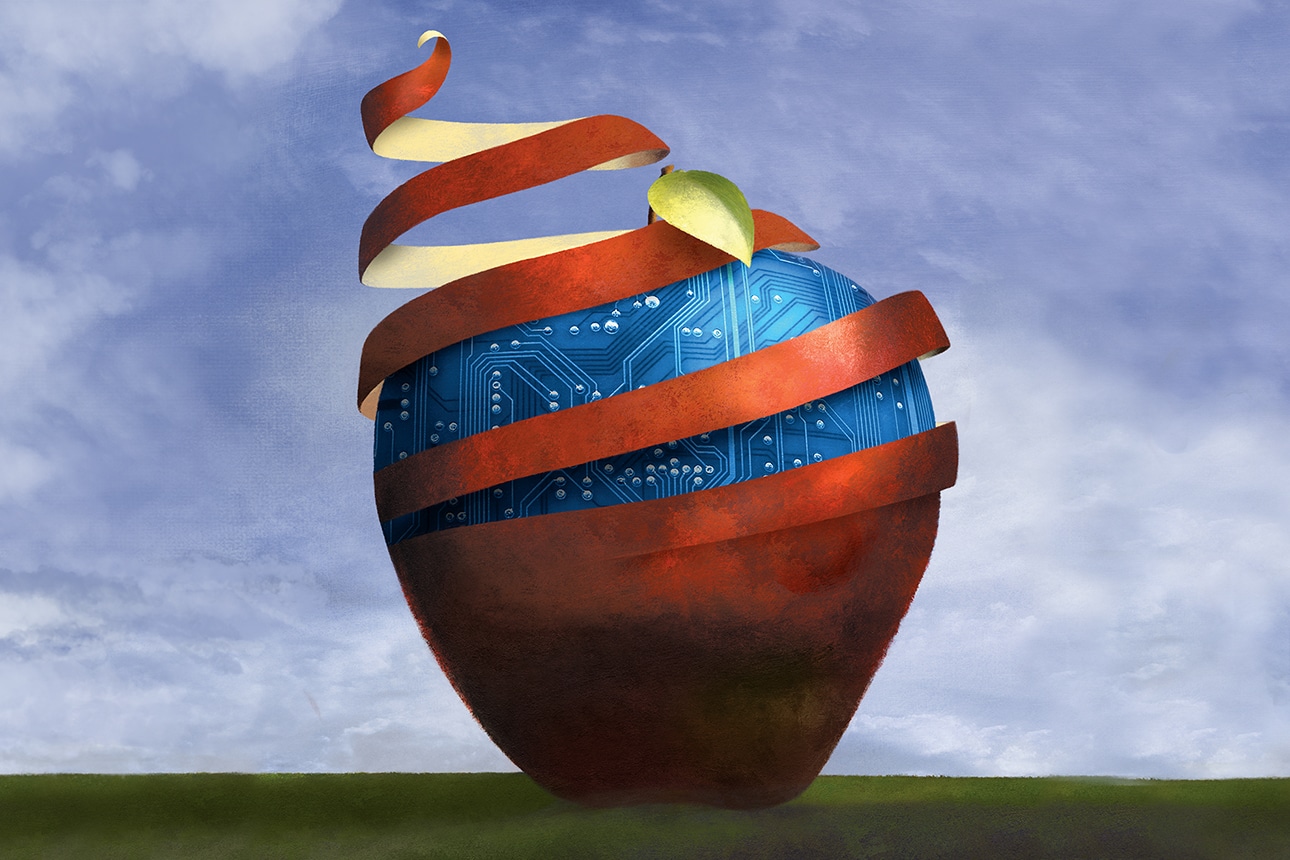Technology evolves at an unprecedented pace, reshaping how people work, communicate, and live. What once seemed futuristic — artificial intelligence, quantum computing, autonomous systems — is now becoming part of everyday life. As we move further into 2025, the digital world continues to expand, influencing industries, economies, and societies in profound ways.
From breakthroughs in AI and biotechnology to the rise of immersive digital experiences, this era of innovation is defining a new age of human capability and connection. Let’s explore the key technological trends transforming the world and what they mean for the future.
1. Artificial Intelligence Becomes Ubiquitous
Artificial Intelligence (AI) is no longer just a tool; it is the foundation of modern innovation. In 2025, AI systems are deeply integrated into nearly every aspect of life — from customer service chatbots and healthcare diagnostics to cybersecurity and creative industries.
The next phase of AI is contextual intelligence — systems that not only analyze data but understand meaning and intent. Large Language Models (LLMs), similar to GPT-based systems, are powering more natural human-computer interactions, automating complex workflows, and even assisting with decision-making at enterprise levels.
AI-driven personalization has also revolutionized business. E-commerce platforms now use predictive algorithms to anticipate customer needs, while educational institutions employ adaptive learning technologies to tailor instruction for each student.
However, with AI’s growing influence come ethical questions about data privacy, bias, and accountability. As AI becomes more autonomous, balancing innovation with regulation will be a defining challenge of the decade.
2. The Rise of Quantum Computing
Quantum computing — once a purely theoretical concept — is rapidly becoming a practical reality. Unlike classical computers that process bits (0s and 1s), quantum computers use qubits, allowing them to perform multiple calculations simultaneously.
This capability gives quantum systems exponential processing power, ideal for solving complex problems that traditional computers cannot handle — from molecular simulations in drug discovery to optimization in logistics and finance.
In 2025, major tech companies like IBM, Google, and startups such as IonQ and Rigetti are competing to achieve quantum advantage — the point where quantum computers outperform classical ones for meaningful tasks.
While mainstream quantum computing is still a few years away, its potential is transformative. Once commercialized, it could revolutionize encryption, artificial intelligence, and materials science. Governments and corporations worldwide are investing heavily to secure a foothold in this next computing revolution.

3. The Expansion of 5G and the Dawn of 6G Research
The global rollout of 5G networks has accelerated connectivity across industries. With speeds up to 100 times faster than 4G and near-zero latency, 5G has enabled innovations like remote robotic surgery, autonomous vehicles, and smart cities.
In manufacturing, 5G allows real-time monitoring and automation, while in entertainment, it powers cloud gaming and immersive virtual experiences without lag.
Even as 5G becomes mainstream, research into 6G has already begun. Expected to launch around 2030, 6G will deliver speeds up to 100 times faster than 5G and integrate AI directly into the network infrastructure. It will enable fully intelligent connectivity — where devices, sensors, and networks communicate seamlessly to create a truly interconnected digital ecosystem.
4. The Metaverse and Immersive Reality
The concept of the metaverse — a shared digital universe combining virtual reality (VR), augmented reality (AR), and the internet — is reshaping entertainment, education, and work.
In 2025, major companies are investing billions to build metaverse platforms that merge the physical and digital worlds. Users can attend concerts, collaborate in virtual offices, or explore historical reconstructions — all through immersive technologies.
Education has particularly benefited from these advances. Students can conduct virtual chemistry experiments or take field trips to ancient civilizations in fully interactive 3D environments. In healthcare, VR is used for surgical training and psychological therapy, providing realistic simulations without physical risk.
While the metaverse holds vast potential, it also raises concerns about privacy, addiction, and digital ownership. Questions about who controls virtual spaces and how digital assets are regulated remain central to ongoing debates.
5. Cybersecurity in an Age of Hyperconnectivity
As technology evolves, so do the threats that accompany it. The explosion of connected devices — from smart homes to industrial IoT systems — has created new vulnerabilities.
Cybersecurity has become a global priority, with organizations investing heavily in zero-trust architectures, which assume no user or device is safe by default. AI is now used both offensively and defensively — attackers use machine learning to craft sophisticated threats, while defenders deploy AI for threat detection and automated response.
In 2025, one of the most significant developments in cybersecurity is post-quantum encryption, designed to protect data from future quantum computers that could potentially break traditional cryptographic systems. Governments and tech firms are racing to implement these new standards before quantum computing becomes mainstream.
For individuals, digital literacy and security awareness remain crucial. As personal data becomes more valuable than ever, understanding privacy settings, authentication, and phishing threats is essential for digital survival.
6. Green Tech and the Digital Sustainability Revolution
With climate change at the forefront of global discussions, technology is playing a key role in driving sustainability. Innovations in green tech — from renewable energy systems to energy-efficient data centers — are reshaping industries.
AI-powered environmental monitoring systems help predict weather patterns, track deforestation, and optimize energy usage. Blockchain is being used to improve supply chain transparency, ensuring materials are sourced ethically and sustainably.
The rise of circular technology — designing products that are repairable, recyclable, and energy-efficient — is also gaining traction. Tech giants are committing to carbon neutrality and investing in sustainable manufacturing, cloud computing, and e-waste recycling.
Digital sustainability isn’t just an environmental movement; it’s an economic one. Consumers are demanding greener products, and companies that adapt are finding new opportunities for innovation and brand loyalty.
7. The Evolution of Human-Technology Interaction
Perhaps the most fascinating shift in technology is the evolving relationship between humans and machines. Interfaces are becoming more natural, intuitive, and emotionally aware.
Voice assistants, gesture recognition, and brain-computer interfaces (BCIs) are redefining interaction. Neural technologies such as Neuralink are exploring ways to connect human brains directly with computers, potentially restoring mobility for paralyzed individuals or enhancing cognitive performance.
Wearable technology has also advanced beyond fitness tracking. Smartwatches, AR glasses, and biometric clothing can now monitor health, display data in real time, and even assist in early disease detection.
As machines become extensions of human capability, ethical discussions about identity, autonomy, and privacy intensify. The line between the biological and digital is blurring — a defining feature of this new technological era.
8. The Democratization of Technology
Finally, one of the most important trends of 2025 is accessibility. Technology is no longer confined to experts or large corporations; it’s becoming democratized.
Low-code and no-code platforms allow anyone to build apps or automate workflows without programming knowledge. Affordable 3D printers empower local manufacturing, while open-source communities share software innovations globally.
This democratization fosters creativity, entrepreneurship, and inclusion. It gives people around the world the power to solve local problems using global tools — from developing mobile banking apps in rural areas to building educational platforms for underserved communities.

Conclusion: A Smarter, More Connected Future
The future of technology is not just about faster devices or smarter algorithms — it’s about empowering people. As innovation accelerates, humanity stands at the crossroads of opportunity and responsibility.
Every advancement, from AI to quantum computing, carries both promise and risk. How society chooses to apply these tools will define the coming decades.
Technology has always been humanity’s greatest multiplier — amplifying our creativity, intelligence, and reach. The challenge now is to ensure that progress remains ethical, sustainable, and inclusive.
If we can balance innovation with wisdom, the digital revolution of 2025 and beyond will not just transform industries — it will elevate the human experience itself.

